Alchimia di Jackson Pollock. Viaggio all'interno della materia
Dal 14 February 2015 al 6 April 2015
Venezia
Luogo: Collezione Peggy Guggenheim
Indirizzo: Dorsoduro 701
Orari: Tutti i giorni dalle 10 alle 18. Chiuso martedì
Curatori: Curata da Luciano Pensabene Buemi e Roberto Bellucci
Enti promotori:
- Con patrocinio della Regione del Veneto
- la mostra beneficia del supporto di Intrapresae Collezione Guggenheim
- della Private Bank BSI e di Enel. Nec Display Solutions Italia è main sponsor dell’esposizione.
Costo del biglietto: intero 14 €, ridotto 12 €. Per altre agevolazioni, consultare il sito web
Telefono per informazioni: + 39 041 2405411
E-Mail info: info@guggenheim-venice.it
Sito ufficiale: http://www.guggenheim-venice.it
4 Settembre 1947. Jackson Pollock scrive alla madre Stella scusandosi di non poterle restituire il grande telaio da ricamo perché utilizzato per la creazione di una nuova opera, a cui successivamente sarà dato il nome di Alchimia. Sempre nel 1947 le celebri foto di Herbert Matter ritraggono Pollock a lavoro nello studio di Long Island con Alchimia fissata al telaio da ricamo poggiato sul pavimento. Quel modo di lavorare a terra, a diretto contatto con il pavimento, segnerà la nascita della tecnica del dripping.
Febbraio 2015. Dopo oltre un anno di assenza e dopo essere stato oggetto di un importante progetto di studio e conservazione presso l’Opificio delle Pietre Dure di Firenze Alchimia torna alla Collezione Peggy Guggenheim, a cui appartiene, perno centrale della mostra scientifica Alchimia di Jackson Pollock. Viaggio all’interno della materia (14 febbraio – 6 aprile 2015), a cura di Luciano Pensabene Buemi, Conservatore del museo veneziano, e Roberto Bellucci, Funzionario Restauratore Conservatore Opificio delle Pietre Dure, Firenze.
Alchimia di Jackson Pollock. Viaggio all’interno della materia è la prima mostra di un articolato progetto espositivo con cui la Collezione Peggy Guggenheim rende omaggio ai fratelli Pollock. Seguirà infatti, dal 22 aprile al 14 settembre 2015, un doppio tributo a Jackson e al fratello maggiore Charles, con le mostre Jackson Pollock, Murale. Energia resa visibile e Charles Pollock: una retrospettiva. L’intero progetto gode del patrocinio della Missione Diplomatica Statunitense in Italia e del prezioso sostegno della Pollock-Krasner Foundation.
Alchimia di Jackson Pollock. Viaggio all’interno della materia svelerà allo spettatore l’esplosione dei colori ritrovati dopo il lungo intervento di pulitura, in una sorprendente riscoperta della celeberrima opera, che verrà eccezionalmente esposta senza teca protettiva in modo da offrire l’esatta lettura della sua complessa superficie tridimensionale.
La mostra guiderà il visitatore in un viaggio unico e affascinante all'interno del dipinto, della tecnica esecutiva, dell’intervento di restauro, attraverso un coinvolgente allestimento multimediale. Video, riproduzioni in 3D, touch-screen, strumenti interattivi, nonché documentazione e oggetti storici provenienti dalla Pollock-Krasner House and Study Center di Long Island renderanno fruibile in modo dettagliato l’opera dell’artista, in tutta la sua matericità e nella sua ampia palette di 19 colori. A seguito di questo esaustivo studio e dell’intervento di pulitura, illustrato anche da un filmato realizzato dalla web Tv del Consiglio Nazionale delle Ricerche, l’esposizione presenterà inedite informazioni su Pollock e sul suo dipinto, rivelando la personalità di un artista che ha combinato materiali e metodi di applicazione tradizionali con tecniche totalmente anti-convenzionali.
L’esposizione costituisce il primo, importante risultato di un più ampio progetto di studio e conservazione dedicato a dieci opere di Jackson Pollock, realizzate tra il 1942 e il 1947, oggi di proprietà Collezione Peggy Guggenheim. Le tele vennero acquisite dalla stessa Peggy Guggenheim, mecenate dell’artista americano, che espose nella propria galleria newyorkese Art of This Century nel corso degli anni ’40. Nell’insieme le dieci opere rappresentano un momento cruciale nel lavoro di Pollock, ovvero il passaggio da un linguaggio pittorico relativamente tradizionale e figurativo/astratto, a quella tecnica distintiva di versare, schizzare e sgocciolare la pittura sulla tela stesa a terra. Nell’ambito di questo progetto Alchimia è stata trasferita lo scorso dicembre nel Laboratorio Dipinti dell’Opificio delle Pietre Dure di Firenze, per un attento studio analitico e intervento di conservazione. Qui, nel corso del 2014, un team di studiosi, scienziati e conservatori, provenienti da diversi istituti scientifici italiani impegnati nel campo della conservazione dei beni culturali, ha esaminato ogni aspetto tecnico del dipinto. L’opera è stata sottoposta in seguito a un meticoloso intervento di pulitura, particolarmente complesso a causa della ricca e stratificata superficie pittorica, costituita da smalti, resine alchidiche, colori a olio, sabbia e sassolini, il tutto combinato in un impasto denso, fatto di grumi di pittura, schizzi e sgocciolamenti. La pulitura è stata necessaria per rimuovere lo strato di sporco accumulato negli anni, che aveva compromesso la leggibilità del quadro, opacizzando i colori e diminuendo lo spazio tridimensionale creato dalla tecnica innovativa di Pollock.
Il progetto di ricerca, il primo in assoluto in Italia, è stato reso possibile grazie alla costituzione di un gruppo scientifico di assoluto rilievo, coordinato dai dipartimenti di conservazione della Collezione Peggy Guggenheim di Venezia e del Museo Solomon R. Guggenheim di New York in collaborazione con l'Opificio delle Pietre Dure di Firenze, con il prezioso apporto del CNR-ISTM e del Centro di eccellenza SMAArt dell’Università di Perugia, del CNR-INO e dell’INFN dell’Università di Firenze, del Visual Computing Lab del CNR-ISTI di Pisa, del Dipartimento di Chimica dell’Università di Torino. Il progetto ha coinvolto inoltre scienziati, conservatori e curatori americani che hanno già svolto ricerche sulle tecniche di Pollock. L’intervento è stato eseguito da Luciano Pensabene Buemi, Conservatore della Collezione Peggy Guggenheim in collaborazione con Francesca Bettini, restauratore Settore Dipinti dell’Opificio delle Pietre Dure. Fondamentale il contributo di Carol Stringari Deputy-director e Chief Conservator della Fondazione Guggenheim di New York, e di Gillian Mc Millan, Associate Chief Conservator for the Collection, Museo Guggenheim, così come quello, altrettanto prezioso, del Laboratorio Dipinti dell’Opificio delle Pietre Dure di Firenze.
Febbraio 2015. Dopo oltre un anno di assenza e dopo essere stato oggetto di un importante progetto di studio e conservazione presso l’Opificio delle Pietre Dure di Firenze Alchimia torna alla Collezione Peggy Guggenheim, a cui appartiene, perno centrale della mostra scientifica Alchimia di Jackson Pollock. Viaggio all’interno della materia (14 febbraio – 6 aprile 2015), a cura di Luciano Pensabene Buemi, Conservatore del museo veneziano, e Roberto Bellucci, Funzionario Restauratore Conservatore Opificio delle Pietre Dure, Firenze.
Alchimia di Jackson Pollock. Viaggio all’interno della materia è la prima mostra di un articolato progetto espositivo con cui la Collezione Peggy Guggenheim rende omaggio ai fratelli Pollock. Seguirà infatti, dal 22 aprile al 14 settembre 2015, un doppio tributo a Jackson e al fratello maggiore Charles, con le mostre Jackson Pollock, Murale. Energia resa visibile e Charles Pollock: una retrospettiva. L’intero progetto gode del patrocinio della Missione Diplomatica Statunitense in Italia e del prezioso sostegno della Pollock-Krasner Foundation.
Alchimia di Jackson Pollock. Viaggio all’interno della materia svelerà allo spettatore l’esplosione dei colori ritrovati dopo il lungo intervento di pulitura, in una sorprendente riscoperta della celeberrima opera, che verrà eccezionalmente esposta senza teca protettiva in modo da offrire l’esatta lettura della sua complessa superficie tridimensionale.
La mostra guiderà il visitatore in un viaggio unico e affascinante all'interno del dipinto, della tecnica esecutiva, dell’intervento di restauro, attraverso un coinvolgente allestimento multimediale. Video, riproduzioni in 3D, touch-screen, strumenti interattivi, nonché documentazione e oggetti storici provenienti dalla Pollock-Krasner House and Study Center di Long Island renderanno fruibile in modo dettagliato l’opera dell’artista, in tutta la sua matericità e nella sua ampia palette di 19 colori. A seguito di questo esaustivo studio e dell’intervento di pulitura, illustrato anche da un filmato realizzato dalla web Tv del Consiglio Nazionale delle Ricerche, l’esposizione presenterà inedite informazioni su Pollock e sul suo dipinto, rivelando la personalità di un artista che ha combinato materiali e metodi di applicazione tradizionali con tecniche totalmente anti-convenzionali.
L’esposizione costituisce il primo, importante risultato di un più ampio progetto di studio e conservazione dedicato a dieci opere di Jackson Pollock, realizzate tra il 1942 e il 1947, oggi di proprietà Collezione Peggy Guggenheim. Le tele vennero acquisite dalla stessa Peggy Guggenheim, mecenate dell’artista americano, che espose nella propria galleria newyorkese Art of This Century nel corso degli anni ’40. Nell’insieme le dieci opere rappresentano un momento cruciale nel lavoro di Pollock, ovvero il passaggio da un linguaggio pittorico relativamente tradizionale e figurativo/astratto, a quella tecnica distintiva di versare, schizzare e sgocciolare la pittura sulla tela stesa a terra. Nell’ambito di questo progetto Alchimia è stata trasferita lo scorso dicembre nel Laboratorio Dipinti dell’Opificio delle Pietre Dure di Firenze, per un attento studio analitico e intervento di conservazione. Qui, nel corso del 2014, un team di studiosi, scienziati e conservatori, provenienti da diversi istituti scientifici italiani impegnati nel campo della conservazione dei beni culturali, ha esaminato ogni aspetto tecnico del dipinto. L’opera è stata sottoposta in seguito a un meticoloso intervento di pulitura, particolarmente complesso a causa della ricca e stratificata superficie pittorica, costituita da smalti, resine alchidiche, colori a olio, sabbia e sassolini, il tutto combinato in un impasto denso, fatto di grumi di pittura, schizzi e sgocciolamenti. La pulitura è stata necessaria per rimuovere lo strato di sporco accumulato negli anni, che aveva compromesso la leggibilità del quadro, opacizzando i colori e diminuendo lo spazio tridimensionale creato dalla tecnica innovativa di Pollock.
Il progetto di ricerca, il primo in assoluto in Italia, è stato reso possibile grazie alla costituzione di un gruppo scientifico di assoluto rilievo, coordinato dai dipartimenti di conservazione della Collezione Peggy Guggenheim di Venezia e del Museo Solomon R. Guggenheim di New York in collaborazione con l'Opificio delle Pietre Dure di Firenze, con il prezioso apporto del CNR-ISTM e del Centro di eccellenza SMAArt dell’Università di Perugia, del CNR-INO e dell’INFN dell’Università di Firenze, del Visual Computing Lab del CNR-ISTI di Pisa, del Dipartimento di Chimica dell’Università di Torino. Il progetto ha coinvolto inoltre scienziati, conservatori e curatori americani che hanno già svolto ricerche sulle tecniche di Pollock. L’intervento è stato eseguito da Luciano Pensabene Buemi, Conservatore della Collezione Peggy Guggenheim in collaborazione con Francesca Bettini, restauratore Settore Dipinti dell’Opificio delle Pietre Dure. Fondamentale il contributo di Carol Stringari Deputy-director e Chief Conservator della Fondazione Guggenheim di New York, e di Gillian Mc Millan, Associate Chief Conservator for the Collection, Museo Guggenheim, così come quello, altrettanto prezioso, del Laboratorio Dipinti dell’Opificio delle Pietre Dure di Firenze.
SCARICA IL COMUNICATO IN PDF
COMMENTI

-
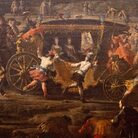 Dal 20 December 2025 al 20 April 2026
Caserta | Reggia di Caserta
Dal 20 December 2025 al 20 April 2026
Caserta | Reggia di Caserta
Regine: trame di cultura e diplomazia tra Napoli e l’Europa
-
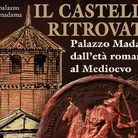 Dal 19 December 2025 al 23 March 2026
Torino | Palazzo Madama - Museo Civico d’Arte Antica
Dal 19 December 2025 al 23 March 2026
Torino | Palazzo Madama - Museo Civico d’Arte Antica
Il castello ritrovato. Palazzo Madama dall’età romana al medioevo
-
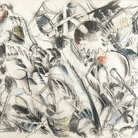 Dal 17 December 2025 al 19 January 2026
Roma | Palazzo della Cancelleria
Dal 17 December 2025 al 19 January 2026
Roma | Palazzo della Cancelleria
De Humana Mensura di Linda Karshan
-
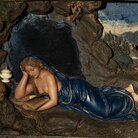 Dal 18 December 2025 al 12 April 2026
Firenze | Gallerie degli Uffizi
Dal 18 December 2025 al 12 April 2026
Firenze | Gallerie degli Uffizi
Cera una volta. Sculture dalle collezioni medicee
-
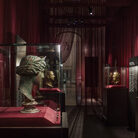 Dal 11 December 2025 al 9 April 2026
Firenze | Museo Archeologico Nazionale di Firenze
Dal 11 December 2025 al 9 April 2026
Firenze | Museo Archeologico Nazionale di Firenze
Icone di Potere e Bellezza
-
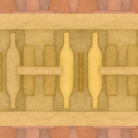 Dal 11 December 2025 al 11 January 2026
Roma | Palazzo Esposizioni Roma
Dal 11 December 2025 al 11 January 2026
Roma | Palazzo Esposizioni Roma
Giorgio Morandi nella Collezione Eni. Un viaggio attraverso la storia culturale del cane a sei zampe e l’eredità di Enrico Mattei



